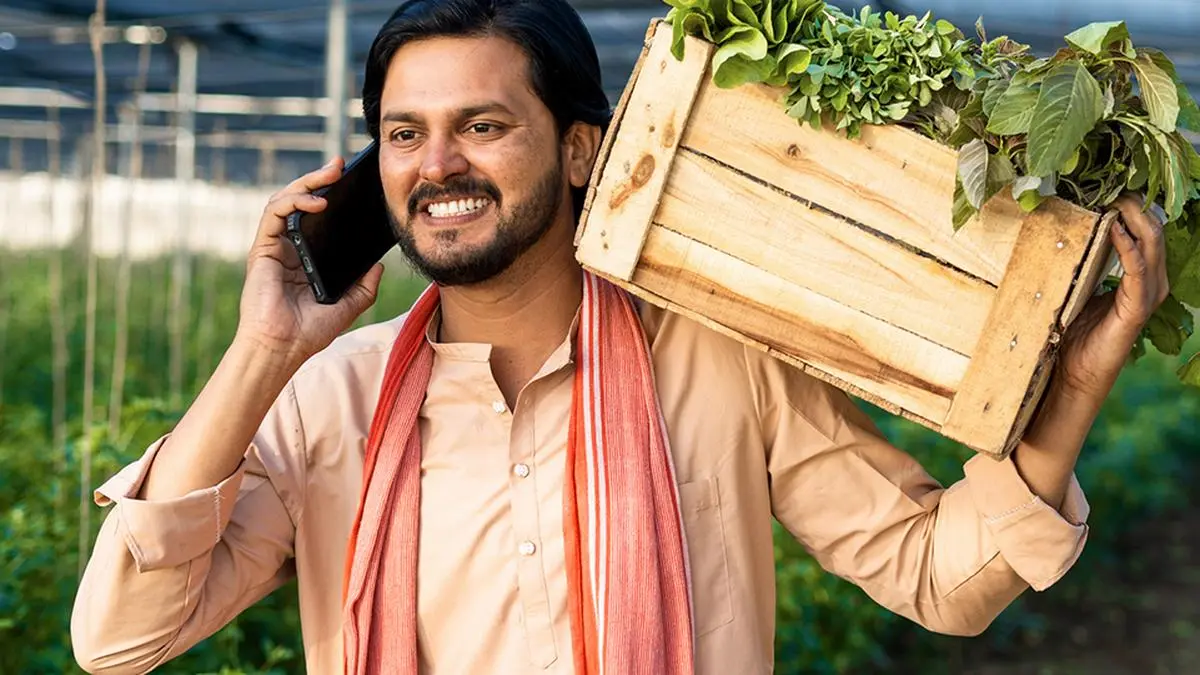By Ajay Kakra
Copyright thehindubusinessline

The agriculture industry in India is at a pivotal juncture. A lot of young people believe that agriculture is labor-intensive and offers few benefits. Growing expenses for anything from seeds to machinery only serve to reinforce that perception. It’s important to consider if tax reform would actually make farming more alluring now that the government is modifying the Goods and Services Tax (GST) on agricultural inputs.
The cost squeeze on farmers
For the majority of farmers, farming math is straightforward. Crop market prices hardly ever move in their favour, while the cost of equipment, fertilizers and pesticides continues to rise. The burden is increased by varying GST rates. Urea and some basic fertilisers are taxed lightly, but high-efficiency irrigation systems, greenhouse materials and modern farm machinery can carry rates of 12 to 18 per cent. A young farmer who wants to invest in a drip-irrigation system or a precision seeder must factor in the extra tax on top of already steep prices. Smallholders selling through local traders often can’t claim input-tax credits either, so whatever GST they pay stays paid. Add to this the rising cost of diesel, storage shortages, and expensive loans, and farming starts to look like a risky bet rather than a rewarding career.
Youth disengagement and the migration pull
A lot of young people from rural areas move to the city. According to surveys, the typical Indian farmer is now about fifty years old. The Economic Survey 2023-24 points out that India will need to generate about 78.5 lakh non-farm jobs every year until 2030 just to productively engage its growing working-age population. This explains why so many young people are moving away from farming — they see greater opportunity and stability outside the fields. The lure of city life—steady wages, better education and easier access to healthcare—pulls them away from the uncertainty of agriculture.
When margins are narrow and technology is out of reach, fewer young people want to take over family farms. Without them, industry runs the risk of stagnating at a time when it needs new solutions to address shifting dietary habits and climate pressures.
The changing face of farming
Since farming isn’t often seen as a modern or ambitious vocation, many young people nowadays are hesitant to pursue it. It is frequently regarded as traditional labour in villages rather than an area for innovation or entrepreneurship. In contrast, nations like Israel and Japan demonstrate how farming can be a high-tech, recognised career, with young farmers utilising AI, sensors and drones to increase productivity. India may reinvent farming as a cutting-edge, tech-driven profession that appeals to and motivates the next generation if it can reduce prices through GST changes and encourage such innovation.
How reforms could help
Several think tanks and industry bodies proposals are presented on the table. First is to bring all essential farm machinery and advanced irrigation tools down to a flat 5 per cent GST, or even zero. Another is to simplify how small farmers claim input-tax credits, making it possible even if they sell through informal markets. Some experts also suggest extra tax breaks for equipment that saves water or cuts carbon emissions.
Lower rates on agriculture technology would immediately cut upfront costs. Easier credit for GST already paid would improve cash flow. Together, these steps could help young entrepreneurs see farming as a business with real prospects instead of a gamble.
Complementary measures
We can say that tax changes alone won’t fix everything. Our Indian farmers still need reliable power supply, cold storage system, fair market access and affordable loans. Crop insurance and stable procurement policies matter just as much. State governments will also have to manage the revenue impact if GST collections drop.
States must also coordinate to prevent revenue losses that could hamper rural development spending. A phased approach—starting with high-impact areas like farm machinery and digital services—may strike the right balance.
The way forward
Making farming affordable is about more than nostalgia for village life. It’s about food security and economic stability. Thoughtful GST reform, with better infrastructure and market support—can help turn agriculture into an attractive career again.
A few steps could make a real difference:
· Lower GST on modern farm tools and eco-friendly inputs to reduce entry barriers.
· Ensure easier access to credit and insurance so farmers are not forced into debt traps.
· Invest in rural infrastructure like cold storage, irrigation and digital market links.
· Promote skill development for young farmers so they can adopt new technologies with confidence.
If India wants its youth to stay on the land, lowering the cost of doing business is a good place to start. The country’s future food security depends on whether farming is seen not as a burden, but as a profession where innovation, dignity and prosperity can grow together.
(The author is Leader – Food and Agriculture, GIDAS, Forvis Mazars in India.)
Published on September 21, 2025



